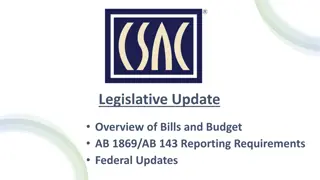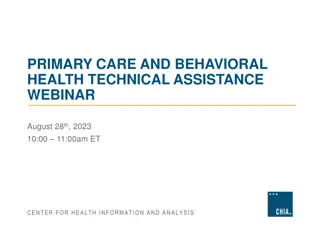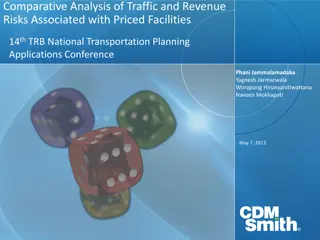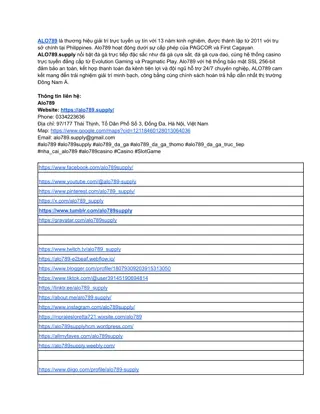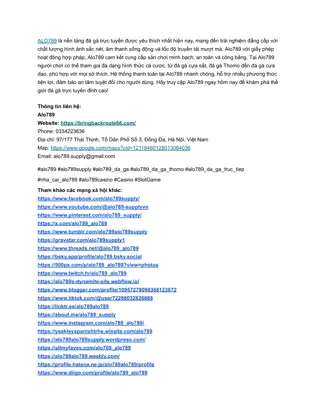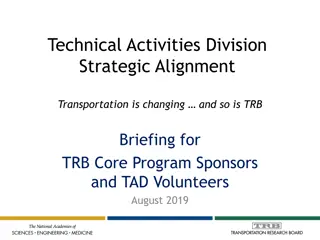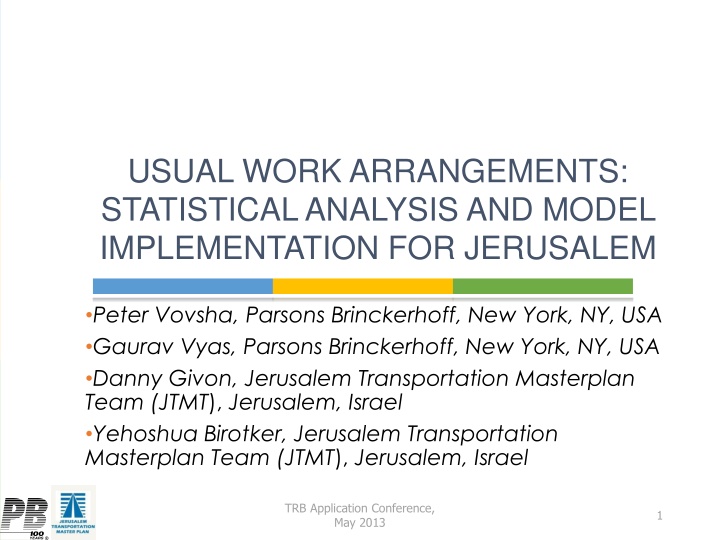
Implications of Alternative Work Arrangements on Commuting Patterns in Jerusalem
Explore the impact of alternative work arrangements on commuting behaviors in Jerusalem, as discussed at the TRB Application Conference. Understand the shift from traditional commuting models to more flexible schedules and telecommuting options, and how these changes affect travel demand modeling and policy decisions regarding congestion pricing. Delve into the taxonomy of usual work arrangements and analyze data from the Jerusalem Household Travel Survey to gain insights into commuting trends across different sectors of the population.
Uploaded on | 2 Views
Download Presentation

Please find below an Image/Link to download the presentation.
The content on the website is provided AS IS for your information and personal use only. It may not be sold, licensed, or shared on other websites without obtaining consent from the author. If you encounter any issues during the download, it is possible that the publisher has removed the file from their server.
You are allowed to download the files provided on this website for personal or commercial use, subject to the condition that they are used lawfully. All files are the property of their respective owners.
The content on the website is provided AS IS for your information and personal use only. It may not be sold, licensed, or shared on other websites without obtaining consent from the author.
E N D
Presentation Transcript
USUAL WORK ARRANGEMENTS: STATISTICAL ANALYSIS AND MODEL IMPLEMENTATION FOR JERUSALEM Peter Vovsha, Parsons Brinckerhoff, New York, NY, USA Gaurav Vyas, Parsons Brinckerhoff, New York, NY, USA Danny Givon, Jerusalem Transportation Masterplan Team (JTMT), Jerusalem, Israel Yehoshua Birotker, Jerusalem Transportation Masterplan Team (JTMT), Jerusalem, Israel TRB Application Conference, May 2013 1
Motivation Commuting to work: Main traffic component in peak periods Cornerstone of travel demand modeling Traditional view on commuters: Full-time worker Commuting every regular workday Commuting in peak hours AM / PM Inflexible schedule dictated by employer New tendencies: Growing number of alternative flexible arrangements New phenomena like telecommuting TRB Application Conference, May 2013 2
Implications for Modeling Alternative work arrangements affect: Commuting patterns and frequency Sensitivity to congestion pricing and other policies Correspond to policy levers: Compressed work weeks Peak spreading for work hours Incorporation in travel models: Explicit (sub-model) or implicit (DAP, work trip rates)? Assumptions for future (fixed or trends?) TRB Application Conference, May 2013 3
Taxonomy of Usual Work Arrangements Arrangement Job type Number of jobs Usual workplace location Normal Full time 1 Out of home - permanent Alternative Part-time 2+ At home Out of home - variable 1-4 days a week (compressed) 6-7 days a week (extended) High (once a week or greater) Yes / significant Second shift, other Commuting frequency 5 days a week Telecommuting frequency Schedule flexibility Usual schedule Low (less than once a week) No / little AM / PM 4
Jerusalem Household Travel Survey, 2010 Population Sector Full-time workers Part-time workers # Households Secular Ultra Orthodox 4,887 5,251 1,277 2,119 1,162 558 Arab 1,224 1,528 198 Total 8,230 7,941 2,033 TRB Application Conference, May 2013 5
Full-time Part-time Person and Household Characteristics; Occupation Main Work Arrangement (lifestyle) Job Type 1 2+ Number of Jobs Hired Self Employed Empl. Type Home Permanent Work Place Varied Work Location Usual Work Location Model Work Place If home is not the work place 24 Alternatives Commuting Frequency and Flexibility
Commuting Frequency and Flexibility Number of Days Working 1/ 7 2/ 7 3/ 7 4/ 7 5/ 7 6/ 7 7/ 7 Telecommuting Frequency (8 categories) Schedule Flexibility: 1) No, 2) Some, 3) High, 4) No schedule Usual Schedule (5 categories) TRB Application Conference, May 2013 7
Usual Schedule Categories Usual Departure Time from work Usual Arrival Time to work Before Noon 4 PM - 6 PM 6 PM - 8 PM 8 PM - 10 PM 10 PM - 12 PM After Midnight Noon-2 PM 2 PM-4PM Before 6 AM 113 31 58 49 18 11 4 3 6 AM - 8 AM 24 142 670 872 247 39 12 23 8 AM - 10 AM 19 472 881 1,182 557 119 18 32 10 AM - Noon 0 21 43 39 65 27 8 1 Noon - 2 PM 0 1 7 25 14 14 6 3 2 PM - 4 PM 0 0 1 5 15 27 32 5 4 PM - 6 PM 0 0 0 3 8 18 14 7 After 6 PM 0 0 0 0 2 1 19 26 Conventional Schedule Early Departure Normal Departure and late arrival Over Workers (early arrival and late departure) Second shift workers TRB Application Conference, May 2013 8
Choice Model 1 Main Work Arrangement: 2 for Job types 2 for number of jobs 2 for Employment types 3 for Work location Utility function: 4 parameterized terms by main dimensions: Job types Number of jobs Employment types Work location Interaction terms (2-way constants) TRB Application Conference, May 2013 9
Choice Model 2 Work Location 40 TAZs are sampled from the pool of all TAZs Size variables include inter-sector friction variables Sampling is based on the employment characteristics and impedance between origin and destination TAZ TRB Application Conference, May 2013 10
Choice Model 3 Commuting Frequency and Flexibility: 7 for number of days working 'n+1' alternatives for telecommuting frequency for n number of days at work 4 for schedule flexibility 5 for usual work schedule Utility function: 4 parameterized terms by main dimensions: Number of days at work Telecommuting frequency Schedule flexibility Usual work schedule Interaction terms (2-way constants) TRB Application Conference, May 2013 11
Behavioral Insights Main Work Arrangements Variables Part-time 2+ jobs Self- Home as work place Less Variable work place employed More Age>65 years More Young Arab More Arab Male Less Less More Less Less Arab Female More Less Less Less Less Higher Education Clerical worker More Less More Less More Less More More Less Manufacturing, construction worker Non- professional Less Less More Less More More Less Less More Less TRB Application Conference, May 2013 12
Behavioral Insights- Main Work Arrangements Variables Part-time 2+ jobs Self- Home as work place More Variable work place More employed Less Low Income More Female and presence of children Only worker and household size>1 More Less More More Less More for Arab Sector More Interaction 2+Jobs Self- Home as work place Positive Variable work place Positive employed Positive Part-time Positive Self Positive Positive employed Variable Work place Positive TRB Application Conference, May 2013 13
Behavioral Insights Work Location 4.00 Individual Marginal Effects 2.00 0.00 0 10 20 30 40 50 60 70 Utility -2.00 Distance, km -4.00 Base -6.00 -8.00 -10.00 FTW, Male, Medium Income.lower education, Secular(Base) Female Effect Highinc Effect Higher Education Orthodox PT Worker Effect Lowinc Effect Female with pre-school child Arab Female with Part time TRB Application Conference, May 2013 14
Behavioral Insights Work Location (Unique Feature) Inter-Sector (Social) Friction Employment Sector/Area Arab Orthodox High Very High Very High High Residential Sector/Area Arab Orthodox Secular Secular High Very High TRB Application Conference, May 2013 15
Behavioral Insights Commuting Frequency Model Variables Number of days at work Less than 5 Telecommuting frequency Less Schedule Flexibility More Usual Schedule/ duration Less conventional Less duration Part-time worker Self-employed Less than 5 More More Multiple jobs More than 5 More More Less conventional More conventional More conventional Less conventional Variable work place Academic professional Orthodox-female Less than or equal to 5 More than 5 More More More More Less than 5 Less Less Age>65 years Less than 5 More More Less duration Higher Education Less than 5 More More More conventional 16
Behavioral Insights Commuting Frequency Model Variables Number of days at work More likely equal to 5 Telecommuting frequency Schedule Flexibility Less Usual Schedule/ work duration Less duration Female and presence of children Low Income More likely equal to 5 Less Less duration Female and low income More Interaction No-schedule Some Flexibility High Flexibility Telecommuting Positive Non- Negative Negative Negative conventional schedule 17
Placement in Jerusalem CT-RAMP ABM Population Synthesis Main Long-term Work Arrangements 1 Long-term Location Choices Usual Commuting Freq. & Flexibility Household & Person Mobility Attributes 2 3 Daily Activity-Travel Pattern Type & Time Allocation 4 Tour Location of Non-Work Act. Formation 5 Tour & Trip Details Traffic &Transit Network Simulations TRB Application Conference, May 2013 18
Forecasting Evolution of usual work arrangements: Communication technology revolution (work from home, telecommuting) Structural shifts in industry & occupation (flexible work hours, self employment) Consequence of growing congestion (compress work weeks) Choice Models: Statistically estimated for base year Adjustments for future years: Scenarios and trends (for example, growing telecommuting) Policy tests (for example, shifted usual work hours) TRB Application Conference, May 2013 19
Conclusions and Perspectives Understanding principal changes in commuting patterns: Growing share of alternative work arrangements Incorporation in travel models: Policy lever / scenario management Policy implications of alternative work arranges: Beneficial for reduction of commuting volumes in peak periods Demand elasticity to congestion pricing Impact on total VMT remains unclear TRB Application Conference, May 2013 20








